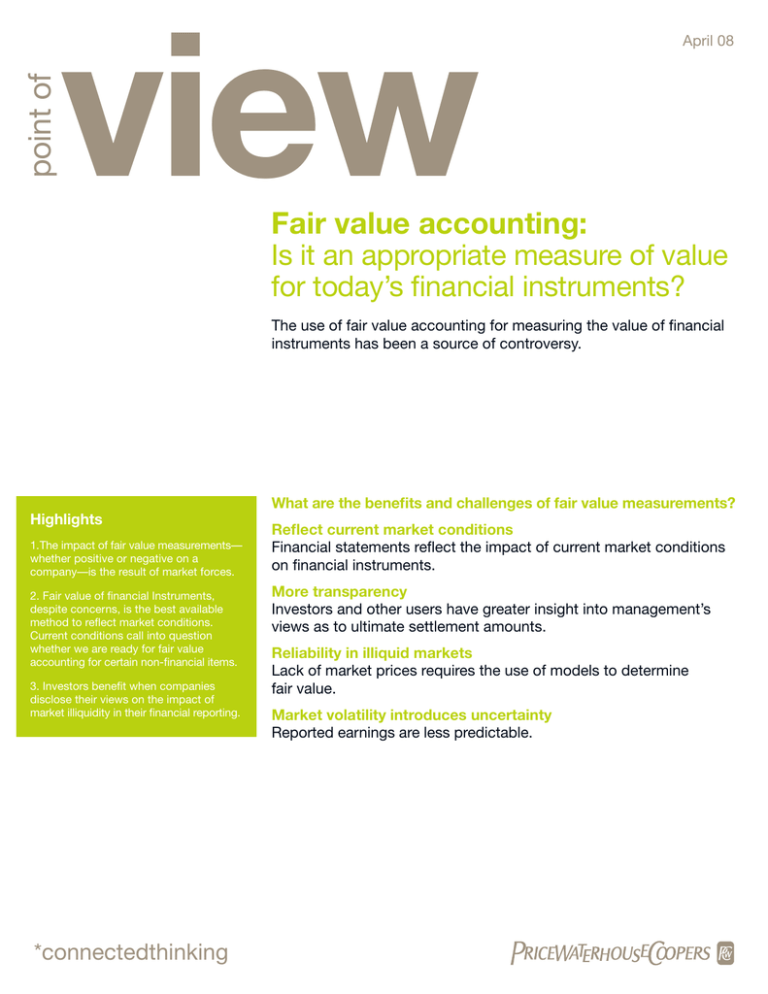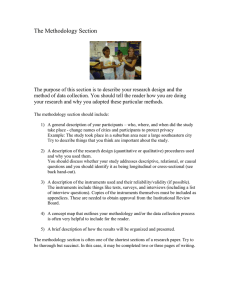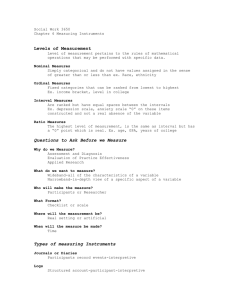
point of
view
April 08
Fair value accounting:
Is it an appropriate measure of value
for today’s financial instruments?
The use of fair value accounting for measuring the value of financial
instruments has been a source of controversy.
Highlights
1.The impact of fair value measurements—
whether positive or negative on a
company—is the result of market forces.
2. Fair value of financial Instruments,
despite concerns, is the best available
method to reflect market conditions.
Current conditions call into question
whether we are ready for fair value
accounting for certain non-financial items.
3. Investors benefit when companies
disclose their views on the impact of
market illiquidity in their financial reporting.
*connectedthinking
What are the benefits and challenges of fair value measurements?
Reflect current market conditions
Financial statements reflect the impact of current market conditions
on financial instruments.
More transparency
Investors and other users have greater insight into management’s
views as to ultimate settlement amounts.
Reliability in illiquid markets
Lack of market prices requires the use of models to determine
fair value.
Market volatility introduces uncertainty
Reported earnings are less predictable.
Background
The impact of fair value accounting
For many years, standard setters have
grappled with the issues associated with
accounting for financial instruments.
Decisions with regard to what valuation
method should be applied have been
difficult and in some cases controversial.
Some claim that only realized
gains and losses should
be recorded.
In 1994, FAS 115 was introduced into U.S.
GAAP as a partial solution. It required fair
value accounting for many investments. In
2000, FAS 133 was introduced to improve
the accounting model for derivatives by
requiring fair value measurement. FAS 157,
issued in 2007, established a common
definition of fair value. Then FAS 159
expanded the ability of companies to elect
fair value as their measurement basis for
certain financial assets and liabilities.
Recently the U.S. markets began experiencing significant illiquidity and volatility,
creating conditions that made fair value
assessments more controversial. The value
of today’s innovative and complex financial
instruments, such as derivatives, mortgagebacked securities and other structured
financial products is subject to market
illiquidity and volatility. Although fair value
accounting could apply to other assets
and liabilities, the focus of this piece is
on financial instruments (particularly
financial assets).
Implications of fair value accounting
While many agree that fair value yields
a more relevant measure than historical
cost, it is not perfect. Two controversies
surround fair value measurements today:
(1) the application of fair value accounting
in illiquid markets, and (2) how and when
modeling should be used as the method
to determine fair value.
Fair value measurements in
illiquid markets
Recent credit market conditions have
resulted in large write-downs through the
application of fair value measurements.
Most of the charges have occurred within
the banking and broker-dealer industries.
1 PricewaterhouseCoopers
Companies providing credit protection
through credit default swaps on the
under­lying asset, as opposed to insurance
contracts, have been impacted by fair value
measurements. Even though the default
that would trigger protection may not
have occurred, companies are required to
recognize unrealized losses on the contract
when the fair value of the underlying assets
has significantly decreased. Also affected
have been some corporations with investments in auction rate securities which
suffered declines.
The requirements to use fair value measurements have been criticized for producing
inaccurate results in the unusual market
conditions recently experienced. Such
results, it is argued, hurt the company in
the long run. If a company must record
losses in such an environment, critics claim,
it signals bad news to investors that may
ultimately be misleading. Therefore, they
say, it is preferable to record only realized
gains and losses.
In considering this controversy, it is important to recognize that accounting principles
such as fair value are developed with the
objective of providing information that
will best serve the interests of investors,
businesses and policy makers over the
long term.
Analysis
Fair value, while not perfect, is the best
method to reflect market conditions when
accompanied by appropriate disclosure
We are sympathetic to the concerns
about fair value measurements that have
grown out of the recent market illiquidity
and volatility. In response to these market
conditions, it has been suggested that
fair value accounting be suspended or
changed for certain financial instruments,
or that businesses should apply their own
models, which may show a less volatile
long-term scenario. The current market, it is
contended, is an anomaly. However, these
concerns must be balanced against investors’ desires to know the current values of
these assets.
Fair value increases the
transparency of the impact
of market forces on
financial information.
Balancing the factors, fair value still represents the most effective method to reflect
the economic realities of market conditions.
If fair value were suspended or replaced
with some method based on historical cost,
investors would be left to their own devices
to determine the current value of these
instruments—which would be less reliable
and could delay any market recovery.
Those contending that the current market is
an anomaly may be correct. If they are right,
the market will eventually recognize that,
return to “normal,” and bid up the price of
their holdings. However, in the interim, we
encourage companies to present the basis
of their views of the instrument’s value and
ultimate settlement amount in their financial
analysis disclosures.
Where models are used to determine
fair value
described above for determining fair value
are applied, the effect on earnings may
be as unpredictable as the market. Like
a pendulum suddenly knocked out of its
cycle, financial instruments may fluctuate
as a result of market realities revealed in
fair value assessments.
The effect of fair value measurements
on long-term value is another concern.
But whether any particular application of
fair value measurements accurately reflects
long-term value can only be decided in the
long term. Fair value measurements enable
financial statements to reveal how financial
instruments are being affected by current
market conditions, resulting in increased
transparency to investors and others.
Summary
Although it has generated controversy,
fair value continues to represent the best
available methodology for determining and
reporting the value of financial instruments.
Markets naturally respond to financial information that fair value provides. The impacts
of such measurements—whether positive
or negative on a given company—are the
results of market forces, not accounting
methodologies. When market conditions
result in volatility in values and earnings,
investors benefit when companies transparently report on these circumstances and
their impact on financial reporting.
Although investors in general believe that
fair value is appropriate for measuring
financial instruments, they and companies
are concerned about the use of fair value
when it is unclear how to determine market
pricing. Fair value measures require (a)
applying market prices regardless of how
erratic the market may be, or (b) referring
to prices of similar securities. When neither
of those alternatives exists, companies
employ models to determine fair value.
Earnings volatility sometimes occurs
when markets become illiquid and market
prices are not available. When the methods
point of view 2
Investors, regulators and the general public
are affected by fair value accounting
Q&A
Q: Does the application of fair value
accounting for financial assets present
economic reality?
A: Fair value is the best available method
to measure and report financial assets.
Fair value is based on market measures
or, in limited cases, estimates of them.
Some have contended that current market
valuations of some complicated securities
do not reflect eventual long-term reality—
for example, in cases where the market for
these instruments has become illiquid. We
understand that complex issues of valuation
are open to reasonable arguments on both
sides. So we encourage those whose views
about ultimate settlement amount conflict
with the application of fair value measurements to disclose their views within their
financial analysis.
Q: What are the merits of using cost
accounting versus fair value accounting
for financial instruments?
A: Cost accounting would value financial
instruments at their acquisition price—not
at their value if sold in the market. Most
investors prefer current valuation because it
is more relevant. Historical cost information
for financial assets has no economic
relevance to the buy, sell, hold decisions
management must make each day.
Q: Has the SEC taken any action in
response to current market conditions
regarding fair value accounting?
A: The SEC is concerned about the quality
and consistency of the assumptions
and judgments inherent in fair value
measurements. Through a direct request
to a number of companies, the SEC is
looking for greater transparency in disclosures around related valuation methods
and assumptions, especially at major
financial institutions.
Q: What industries have been most
impacted by the large write-downs that
were required by fair value accounting?
A: Most have occurred in the banking
and broker-dealer industries and in some
Insurance companies. That reflects
their significant investments in debt
securities and derivatives, including
securitized interests.
Q: As more businesses use IFRS, will
that mean a greater use of fair value
than we see in U.S. GAAP?
A: For financial instruments, IFRS and U.S.
GAAP are generally consistent. However,
for non-financial assets and liabilities IFRS
generally encourages greater use of fair
value than does U.S. GAAP.
Q: Do you support expanding the use
of fair value measures to non-financial
assets and liabilities?
A: We believe that recent events have
pointed out the challenges that exist in
using fair value accounting when markets
are not sufficiently liquid to help establish
fair values. For non-financial assets
and liabilities, those challenges may be
exacerbated. Current conditions call into
question whether we are ready for fair
value accounting for certain non-financial
assets and liabilities.
Contact Information
To have a deeper discussion about how
fair value information might affect your
business, please contact:
Dennis Nally
U.S. Chairman and Senior Partner
PricewaterhouseCoopers LLP
Phone: 646-471-7293
Email: dennis.nally@us.pwc.com
© 2008 PricewaterhouseCoopers LLP. All rights reserved.
“PricewaterhouseCoopers” refers to PricewaterhouseCoopers
LLP (a Delaware limited liability partnership) or, as the context
requires, the PricewaterhouseCoopers global network or
other member firms of the network, each of which is a
separate and independent legal entity. *connectedthinking
is a trademark of PricewaterhouseCoopers LLP (US).





